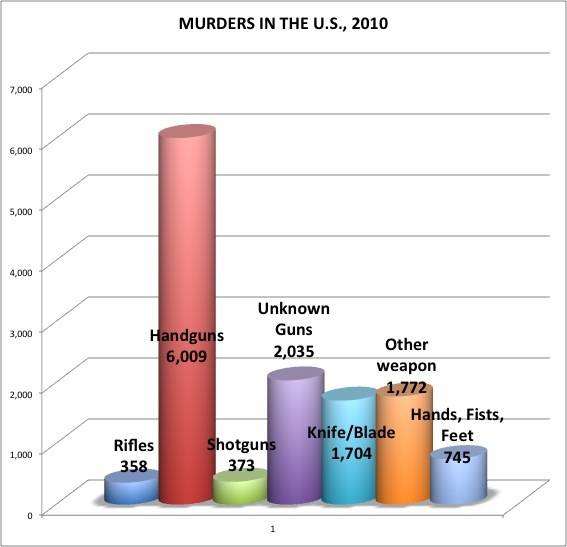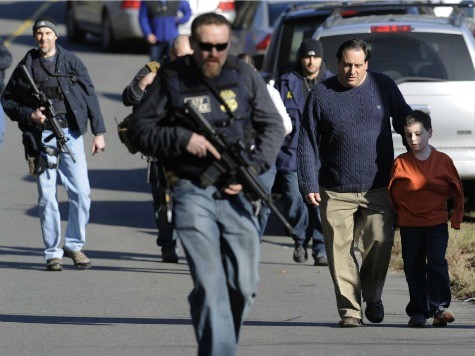
The tragedy in Connecticut deserves a serious response, but will banning “military style” rifles really make adifference?
Timothy Carney put together the chart below based on information from the FBI’s Uniform Crime Report for 2010. As you can see, the total number of murders that involved a rifle was 358, about half the number that involved “hands, fists, feet” and about one-fifth the number of murders involving knives.

There are a significant number of murders involving guns on the chart, but by far the largest number of those are attributable to handguns. So why aren’t we hearing progressives issue calls for a handgun ban rather than a rifle ban?
One reason is surely that a rifle was used by Adam Lanza in the attack on Sandy Hook Elementary school last week. Though Connecticut has fairly strict gun laws, some AR-15 rifles are still legal. Those wanting to prevent another tragedy like this one are simply focusing on the gun used to commit this horrible crime.
But the chart above shows that even a nationwide ban on this particular weapon and all weapons like it would likely have very little impact on murder rates overall. This is, at least arguably, more of a feel-good measure than a serious response to prevent a repeat occurrence.
Another option which is not getting much attention from the media is to place armed police inside elementary schools. Dave Grossman, an author and West Point psychology professor who is considered an expert on aggressive behavior, argues that placing armed guards or police in schools makes far more sense. Grossman made a recent speech to California Police officers in which he noted the perfect record on preventing fires in public schools versus the mixed record of preventing violence:
Look up at the ceiling! See all those sprinklers up there? They’re hardto spot — they’re painted black — but they’re there. While you’relooking, look at the material the ceiling is made of. You know that thatstuff was selected because it’s fire-retardant. Hooah? Now look overthere above the door — you see that fire exit sign? That’s not just anyfire exit sign — that’s a’battery-backup-when-the-world-ends-it-will-still-be-lit’ fire exit sign…
There is not one stinking thing in this room that will burn!… But you’ve still got those fire sprinklers, those fire exit signs, firehydrants outside, and fire trucks nearby! Are these fire guys crazy? Arethese fire guys paranoid? No! This fire guy is our A student! Becausethis fire guy has redundant, overlapping layers of protection, not asingle kid has been killed by school fire in the last 50 years!
Imagine if someone said, “I want a trained fire professional onsite. I want a fire hat, I want a fire uniform, I want a fire badge.But! No fire extinguishers in this building. No fire hoses. The hat, thebadge, the uniform — that will keep us safe — but we have no need forfire extinguishers.” Well, that would be insane. It is equally insane, delusional, legally liable, to say, “Iwant a trained security professional on site. I want a security hat, Iwant a security uniform, and I want a security badge, but I don’t want agun.” It’s not the hat, the uniform, or the badge. It’s the tools in the hands of a trained professional that keeps us safe.
Grossman’s solution to the problem of violence descending on our schools is five-fold and worth considering. The first step is to get past the denial that claims schools are safe without trained, armed guards on site. What Newtown, Connecticut teaches us is that this is not the case.
Banning rifles may feel like an appropriate response to the problem, but it will not prevent the next Columbine or Virginia Tech style assault at a school. Having multiple, overlapping layers of security backed up with a well-trained and armed guard could insure this does not happen ever again.
Image credit: The Washington Examiner

COMMENTS
Please let us know if you're having issues with commenting.